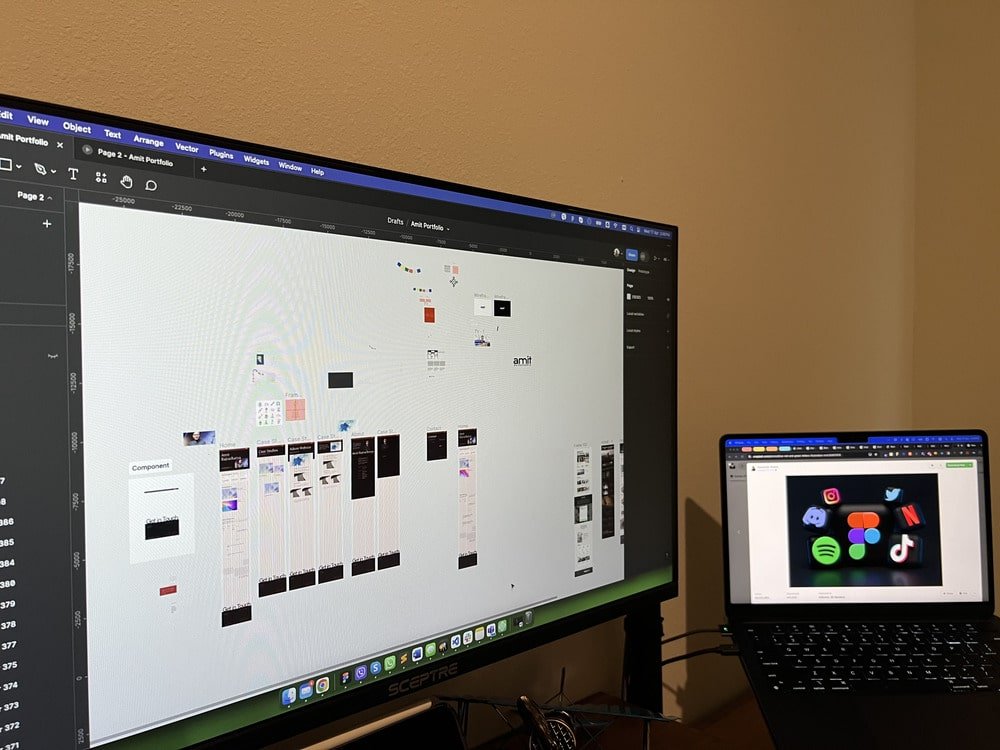In last few years there has been tremendous shift in UI Design tools. Adobe was in the forefront when it comes to design tools, however with the evolution of Figma in last decade made the UI Design process much efficient and accessible. As the digital landscape continues to evolve, designers must adapt to new tools and technologies to remain competitive.
While writing this article, I was working as full time UX designer at the company(Don’t want to mention the name). Switching our company and designers from using Adobe XD to Figma was a tough journey that took nearly a year. My primary role(job description) in the company was UX designer; training or shepherding people to be upto-date was not part of my job description, but I always aimed to go above and beyond. Before I moved to UX Design team, I was doing frontend development for almost 8 months in the same company. While working closely with the development and design team, I noticed several challenges in the handoff from design to development.
One of the first issues we faced was that developers didn’t have premium XD accounts. This meant only one senior developer could export assets, causing delays. Additionally, XD’s preview mode wasn’t always practical for exporting assets. We use Microsoft Teams as a core communication channel, and while sharing screen with Adobe XD files, its almost impossible for any normal users, super slow. These challenges made it clear that a change was needed. Recognizing the industry’s shift towards Figma and the numerous frictions experienced with Adobe XD, I made the decision to lead this transition. However, it wasn’t a smooth process; there were individuals deeply attached to XD, and some even had strong negative sentiments towards Figma.
Over the course of eight months, starting from our first meeting in September 2022 to achieving widespread acceptance by May 2023, I had to go through unexpected complexities of gaining approval and convincing stakeholders, including those unrelated to design teams. Fortunately, I had invaluable support from my senior managers, which made the process easier.
Budget considerations played a crucial role in this transformation. With an additional cost of $12 per person for Figma licenses on top of the monthly Adobe’s subscription made it more difficult to make the decision. However, I strategically explain on making premium plans to key teams like senior developers, UX, and UI, while utilizing free plans for Dev Team, Project Managers, Account Managers, ensuring cost-effectiveness. One of the primary reason I like about Figma is that it also has free version with no compromising functionality.
The transformation didn’t happen overnight, I conducted training sessions to familiarize teams with Figma’s interface and features. However, I encountered challenges as some individuals struggled to grasp fundamental concepts like prototype views and container elements, leading to misconceptions about Figma’s suitability.
We had 100s of project in Adobe XD and the migration from XD to Figma presented its own set of challenges, particularly with text formatting. As I was leading this transition, I moved almost every project from Adobe XD to Figma which others were not ready to get their hands dirty on.
The Shift
The ups and down news about Adobe acquiring Figma working against my initiative. The people who were married to Adobe XD keep bringing up their own assumption on Adobe will discontinue Figma and focus on XD. The reality turned out to be other way round when Adobe XD suddenly disappeared from the Adobe’s website. This served as a clear signal of the necessity to adapt to new tools and technologies in order to remain competitive in the ever-evolving field of design and development before its loo late.
While some individuals within the company were resistant to change, it was imperative for our organization to embrace this transition. Without it, we would have faced significant challenges and potentially fallen behind in our industry. Despite initial reluctance from some team members and friction, the company moved to Figma early this year 2024.
My agenda was not about winning an argument on which tools is better, it was all about being more productive and accessible to everyone.
I had chance to attend Techcruch Disrupt 2022 in San Fransisco, where one of the speaker was Dylan Field (CEO of Figma). He said this statement “Productivity is new creativity”. I couldn’t agree more.

The Impact
Empowering Dev Teams:
The integration of Figma’s dev mode has empowered the development teams by providing them with a streamlined process for design-to-dev handoff. No longer reliant on senior developers for asset exporting, even team members with free Figma accounts can now export, edit, and view assets, significantly reducing dependency and accelerating development timelines.
Facilitating Feedback from Project and Account Managers:
Figma’s inclusive approach allows project and account managers to actively participate in the design process. Utilizing the free version of Figma, managers can provide valuable feedback and suggestions, ensuring that all stakeholders are involved in decision-making processes.
Enhancing Collaboration with Clients
The introduction of Figma has revolutionized our client collaboration process. Clients can now easily access and comment on designs, facilitating smoother communication channels and more efficient feedback loops. Designers can promptly address client input and iterate designs directly within Figma, resulting in quicker turnaround times and heightened client satisfaction.
Streamlining Content Editing for Copywriters:
With Figma, our writers now have a seamless platform for editing content within design files. Whether through comments or direct content pasting, copywriters can efficiently collaborate with designers to integrate written content with design elements. This streamlined workflow enhances productivity and ensures consistent messaging across all design materials.
Conclusion
In conclusion, the transition from Adobe XD to Figma has revolutionized our design workflow and empowered teams to collaborate more effectively. By embracing change and leveraging the capabilities of Figma, we have achieved greater efficiency, enhanced collaboration with clients and stakeholders, and streamlined content editing processes.
Note: The above blog was written before I left the company in April 2024.
